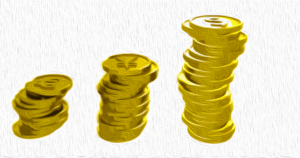
Crypto asset manager Bitwise has revealed its 10 crypto predictions for 2024, which include a forecast of Bitcoin trading over $80,000, setting a new all-time high. The firm also estimates that spot Bitcoin exchange-traded funds (ETFs) could accumulate $72 billion in assets under management. Additionally, Bitwise expects Ethereum revenue to more than double to $5 billion as users flock to crypto applications.
Bitwise's 10 Crypto Predictions
Crypto asset manager Bitwise published a report titled "The Year Ahead: 10 Crypto Predictions for 2024" on Tuesday. Bitwise, the creator of crypto index fund BITW, offers a suite of crypto-focused equity and futures exchange-traded funds (ETFs), as well as investment products that span Bitcoin, Ethereum, decentralized finance (DeFi), and non-fungible tokens (NFTs).
"2023 was a very good year for crypto. But we think 2024 is going to be even better," Bitwise stated. Its first prediction, which concerns the price of Bitcoin, states:
Bitcoin will trade above $80,000, setting a new all-time high.
"There are two major catalysts that will help us reach this milestone: the anticipated launch of a spot Bitcoin ETF in early 2024 and the halving of new Bitcoin supply around the end of April," the firm elaborated.
The second prediction concerns the approval of spot Bitcoin ETFs by the U.S. Securities and Exchange Commission (SEC). Bitwise believes that "Spot Bitcoin ETFs will be approved, and collectively they will be the most successful ETF launch of all time." The asset manager further predicts:
Within five years, we estimate spot Bitcoin ETFs could capture 1% of the $7.2 trillion U.S. ETF market, or $72 billion in assets under management (AUM).
The third prediction focuses on the Nasdaq-listed cryptocurrency exchange Coinbase. Bitwise detailed: "Coinbase's revenue will double, surpassing Wall Street expectations by at least 10x… Historically, Coinbase's trading volumes surge in bull markets, and we expect the same to happen again. Plus, they've launched a wide range of new products that are gaining traction."
Bitwise also believes that one in four financial advisors "will allocate to crypto in client accounts by the end of 2024." The firm emphasized: "We anticipate that once Bitcoin becomes easily accessible, more and more advisors will allocate to crypto in clients' accounts."
The next prediction concerns Ethereum. "In 2023, users paid approximately $2.3 billion in fees to use Ethereum. We expect this figure to at least double in 2024, making Ethereum one of the fastest-growing large-scale tech platforms in the world," Bitwise detailed, predicting:
Ethereum revenue will more than double to $5 billion as users flock to crypto applications.
Moreover, Bitwise believes that "A major upgrade to the Ethereum blockchain will drive the average transaction cost below $0.01, paving the way for more mainstream uses." The firm noted: "EIP-4844 could result in a 90%+ reduction in the cost to use Ethereum. We think this upgrade will pave the way for the first truly mainstream applications in crypto."
Another prediction pertains to artificial intelligence (AI). The asset manager explained: "AI assistants will start using crypto to pay for things online, affirming crypto as 'the native currency of the internet.'" The firm added: "We believe AI assistants will prefer digitally native money, like Bitcoin or stablecoins. And we think that will start happening in 2024."
Moreover, Bitwise expects "More money will settle using stablecoins than using Visa," "JPMorgan will tokenize a fund and launch it on-chain as Wall Street gears up to tokenize real-world assets," "Taylor Swift will launch NFTs to connect with fans in new ways," and "More than $100 million will be staked in prediction markets as they emerge as a new 'killer app' for crypto."
Last week, Vaneck, another asset management firm, released its 15 crypto predictions for 2024. Vaneck believes BTC "will reach an all-time high in Q4 2024, potentially spurred by political events and regulatory shifts following a U.S. presidential election."
What are your thoughts on Bitwise's 10 crypto predictions for 2024? Let us know in the comments section below.
Frequently Asked Questions
How much should I contribute to my Roth IRA account?
Roth IRAs are retirement accounts where you deposit your own money tax-free. These accounts cannot be withdrawn until you turn 59 1/2. However, if your goal is to withdraw funds before that time, there are certain rules you must observe. First, you can't touch your principal (the initial amount that was deposited). This means that no matter how much you contribute, you can never take out more than what was initially contributed to this account. If you decide to withdraw more money than what you contributed initially, you will need to pay taxes.
The second rule is that your earnings cannot be withheld without income tax. So, when you withdraw, you'll pay taxes on those earnings. Let's suppose that you contribute $5,000 annually to your Roth IRA. In addition, let's assume you earn $10,000 per year after contributing. You would owe $3,500 in federal income taxes on the earnings. That leaves you with only $6,500 left. This is the maximum amount you can withdraw because you are limited to what you initially contributed.
Therefore, even if you take $4,000 out of your earnings you still owe taxes on $1,500. You would also lose half of your earnings because they are subject to another 50% tax (half off 40%). So, even though you ended up with $7,000 in your Roth IRA, you only got back $4,000.
There are two types: Roth IRAs that are traditional and Roth. Traditional IRAs allow you to deduct pretax contributions from your taxable income. To withdraw your retirement contribution balance plus interest, your traditional IRA is available to you. A traditional IRA can be withdrawn up to the maximum amount allowed.
Roth IRAs do not allow you to deduct your contributions. You can withdraw your entire contribution, plus accrued interests, after you retire. Unlike a traditional IRA, there is no minimum withdrawal requirement. You don't need to wait until your 70 1/2 year old age before you can withdraw your contribution.
How much should precious metals be included in your portfolio?
To answer this question, we must first understand what precious metals are. Precious metals refer to elements with a very high value relative other commodities. This makes them very valuable in terms of trading and investment. Today, gold is the most commonly traded precious metal.
There are many other precious metals, such as silver and platinum. The price of gold tends to fluctuate but generally stays at a reasonably stable level during periods of economic turmoil. It is not affected by inflation or deflation.
In general, prices for precious metals tend increase with the overall marketplace. But they don't always move in tandem with one another. If the economy is struggling, the gold price tends to rise, while the prices for other precious metals tends to fall. Investors expect lower interest rate, making bonds less appealing investments.
Contrary to this, when the economy performs well, the opposite happens. Investors choose safe assets such Treasury Bonds over precious metals. They become less expensive and have a lower value because they are limited.
Diversifying across precious metals is a great way to maximize your investment returns. Furthermore, because the price of precious Metals fluctuates, it is best not to focus on just one type of precious Metals.
How does a Gold IRA account work?
For people who are looking to invest in precious materials, Gold Ira account accounts provide tax-free investments.
You can purchase gold bullion coins in physical form at any moment. You don't have a retirement date to invest in gold.
The beauty of owning gold as an IRA is you can hold on to it forever. Your gold assets will not be subjected tax upon your death.
Your gold will be passed on to your heirs, without you having to pay capital gains taxes. Your gold is not part of your estate and you don't have to include it in the final estate report.
To open a IRA for gold, you must first create an individual retirement plan (IRA). After you have done this, an IRA custodian will be assigned to you. This company acts as a middleman between you and the IRS.
Your gold IRA custody will take care of the paperwork and send the forms to IRS. This includes filing annual reports.
After you have created your gold IRA, the only thing you need to do is purchase gold bullion. Minimum deposit required is $1,000 You'll get a higher rate of interest if you deposit more.
Taxes will be charged on gold you have withdrawn from an IRA. You will be liable for income taxes and penalties if you take the entire amount.
A small percentage may mean that you don't have to pay taxes. There are exceptions. If you take out 30% of your total IRA assets or more, you will owe federal income taxes and a 20 percent penalty.
Avoid taking out more that 50% of your total IRA assets each year. Otherwise, you'll face steep financial consequences.
What Is a Precious Metal IRA?
A precious metal IRA allows for you to diversify your retirement savings in gold, silver, palladium and iridium. These are called “precious” metals because they're very hard to find and very valuable. These are good investments for your cash and will help you protect yourself from economic instability and inflation.
Precious metals are often referred to as “bullion.” Bullion refers to the actual physical metal itself.
Bullion can be bought via various channels, such as online retailers, large coin dealers and grocery stores.
An IRA for precious metals allows you to directly invest in bullion instead of purchasing stock shares. This will ensure that you receive annual dividends.
Unlike regular IRAs, precious metal IRAs don't require paperwork or annual fees. Instead, you pay a small percentage tax on the gains. Plus, you can access your funds whenever you like.
Can I have physical gold in my IRA
Not only is gold paper currency, but it's also money. People have used gold as a currency for thousands of centuries to preserve their wealth and keep it safe from inflation. Gold is a part of a diversified portfolio that investors can use to protect their wealth from financial uncertainty.
Many Americans are now more inclined to invest in precious metals like gold and silver than stocks or bonds. It is possible to make money by investing in gold. However, it doesn't guarantee that you'll make a lot of money.
One reason is that gold historically performs better than other assets during financial panics. The S&P 500 declined 21 percent during the same period. Gold prices increased nearly 100 per cent between August 2011 – early 2013. During those turbulent market conditions, gold was among the few assets that outperformed stocks.
Another benefit to investing in gold? It has virtually zero counterparty exposure. Even if your stock portfolio is down, your shares are still yours. You can still own your gold even if the company where you invested fails to pay its debt.
Finally, the liquidity that gold provides is unmatched. You can sell your gold at any time without worrying about finding a buyer, which is a major advantage over other investments. Gold is liquid and therefore it makes sense to purchase small amounts. This allows one to take advantage short-term fluctuations within the gold price.
Statistics
- This is a 15% margin that has shown no stable direction of growth but fluctuates seemingly at random. (smartasset.com)
- (Basically, if your GDP grows by 2%, you need miners to dig 2% more gold out of the ground every year to keep prices steady.) (smartasset.com)
- Instead, the economy improved, stocks rebounded, and gold plunged, losing 28 percent of its value in 2013. (aarp.org)
- Contribution limits$6,000 (49 and under) $7,000 (50 and up)$6,000 (49 and under) $7,000 (50 and up)$58,000 or 25% of your annual compensation (whichever is smaller) (lendedu.com)
- If you accidentally make an improper transaction, the IRS will disallow it and count it as a withdrawal, so you would owe income tax on the item's value and, if you are younger than 59 ½, an additional 10% early withdrawal penalty. (forbes.com)
External Links
bbb.org
irs.gov
forbes.com
- Gold IRA: Add Some Sparkle To Your Retirement Nest Egg
- Understanding China's Evergrande Crisis – Forbes Advisor
finance.yahoo.com
How To
Three Ways to Invest In Gold For Retirement
It is important to understand the role of gold in your retirement plan. There are several options to invest in precious metals if your employer has a 401k. It is also possible to invest in gold from outside of your work environment. One example is opening a custodial accounts at Fidelity Investments if an IRA (Individual Retirement Account), if you already own one. You may also want to purchase precious metals from a reputable dealer if you don’t already have them.
These are three easy rules to remember if you invest in gold.
- Buy Gold with Your Cash – Don't use credit cards or borrow money to fund your investments. Instead, put cash into your accounts. This will protect your against inflation and increase your purchasing power.
- Physical Gold Coins You Should Buy – Physical gold coins should be purchased over a paper certificate. Physical gold coins can be sold much faster than paper certificates. There are no storage fees for physical gold coins.
- Diversify your Portfolio – Don't put all your eggs in one basket. This is how you spread your wealth. You can invest in different assets. This helps to reduce risk and provides more flexibility when markets are volatile.
—————————————————————————————————————————————————————————————–
By: Kevin Helms
Title: Bitwise Unveils 10 Crypto Predictions for 2024: Bitcoin to Surpass $80,000, Spot Bitcoin ETFs Could Capture $72 Billion
Sourced From: news.bitcoin.com/bitwise-unveils-10-crypto-predictions-for-2024-bitcoin-to-surpass-80000-spot-bitcoin-etfs-could-capture-72-billion/
Published Date: Fri, 15 Dec 2023 01:00:03 +0000
Related posts:
 Vaneck Unveils 15 Crypto Predictions: Spot Bitcoin ETF Approvals, US Recession, BTC’s Historic Rally
Vaneck Unveils 15 Crypto Predictions: Spot Bitcoin ETF Approvals, US Recession, BTC’s Historic Rally
 The Biggest Driver Behind Bitcoin’s Price Surge: Spot Bitcoin ETFs
The Biggest Driver Behind Bitcoin’s Price Surge: Spot Bitcoin ETFs
 Blackrock Outlines Why SEC ‘Must’ Approve Spot Ethereum ETFs
Blackrock Outlines Why SEC ‘Must’ Approve Spot Ethereum ETFs
 Skybridge Capital Founder Scaramucci Predicts Massive Capital Inflow From Wall Street Into Spot Bitcoin ETFs
Skybridge Capital Founder Scaramucci Predicts Massive Capital Inflow From Wall Street Into Spot Bitcoin ETFs











